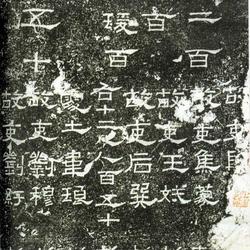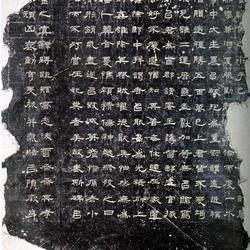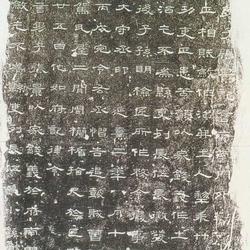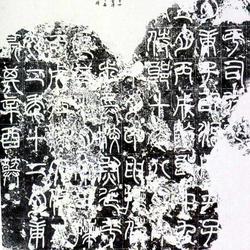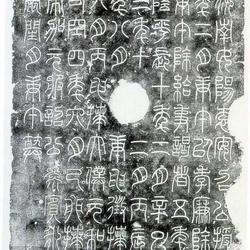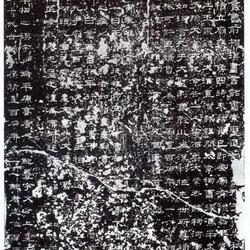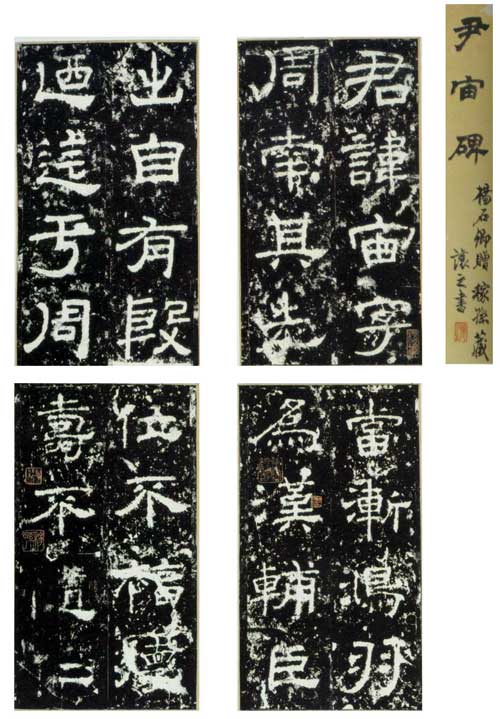
The full name is "The Inscription of the Emperor of the Han Dynasty in Yuzhou Engaged in the Yin Mansion". Eastern Han Dynasty official script inscription. The forehead of the seal has been broken, only the words Cong and Ming remain. In April of the sixth year of Xiping (177), it was established in Yanling, Henan. The owner of the monument, Yin Zhou, whose courtesy name was Zhou Nan, was from Yingchuan, Henan. Botong Jingzhuan went to Yuzhou (governed in today's Haoxian County, Anhui Province) to work. Ji Mao died in April of the sixth year of Xiping at the age of sixty-two.
In the first month of the first year of the Qing Dynasty of the Yuan Dynasty (1312), Abachi of Daluhuachi, Yanling County, Bianliang Road (now Henan) discovered the stone in Weichuan for the purpose of repairing the Confucius Temple. Later, it was moved to the Yanling Confucius Temple. It is unknown when it was lost. . In the seventeenth year of the Jiajing reign of the Ming Dynasty (1538), it is said that during the Wanli period (1573-1619), the coffin was resurfaced due to rising water and the bank collapsed, and was moved back to Yanling Confucius Temple. Today the temple has been changed to the county No. 2 Middle School. For details, see "Essay on Supplementing the School Monument".
"Jin Shi Cui Bian" records: The stele is eight feet one inch high and three feet nine inches wide, with a total of fourteen lines of characters and a full line of twenty-seven characters. The calligraphy is neat and clear, and Wan Jing's "Fen Li Oucun" rated it as "the most outstanding one among Han steles". When the stele was first unearthed, the characters were basically complete and not a word was missing. The rubbings made between the Qianlong and Jiaqing reigns of the Qing Dynasty have lost the words "Deshoubu" and "Deshoubu". There is an inscription on the back of the stele in the third year of Emperor Qing's reign in the Yuan Dynasty.
The structure of "Yinzhou Stele" is tight inside and extended outwards. The strokes are thin, round and strong, and the posture is similar to regular script. Calligraphers since the Yuan and Ming Dynasties have often called it "Yinzhou Stele" and given it a high evaluation. "No word is not vivid, and no word is irregular." ", "Yin Zhou Stele" is one of the inscriptions during the peak period of Han Dynasty. Wang Shu of the Qing Dynasty commented on his calligraphy: "Han official script, each stele has its own frame, and there is no similarity. Most of them are based on the ancient strong, square and clumsy style. The writing style of "Yinzhou Stele" is round and strong, which is close to regular script." ( "Xuzhou Inscriptions and Postscripts") In later generations, this stele and the "Kong Zhou Stele" were often called "Er Zhou". Weng Fanggang of the Qing Dynasty said in his "Inscriptions on Metal and Stone of the Two Han Dynasties": "("Yin Zhou") the stele's characters are slightly larger than those of other stele, and the contrast and degree are balanced. It can be played with the "Kong Zhou stele"." Although Guo Shangxian thought that "Yin Zhou" It is "not as good as Kong Zhou", but when he was writing "Er Zhou", he still said that "the writing feels like Qin seal script", and said that "Yin Zhou" "is not as elegant as "Shi Chen" and "Shi Chen". "The stones in "Han Yuan" are so round and neat that no one from the Wei Dynasty could replicate them." ("Fang Jian Guan Inscription and Postscript") By the time of Qianlong, the entire stele was still full of characters. Afterwards, rubbings were made, and the number of characters "搐" gradually increased.

